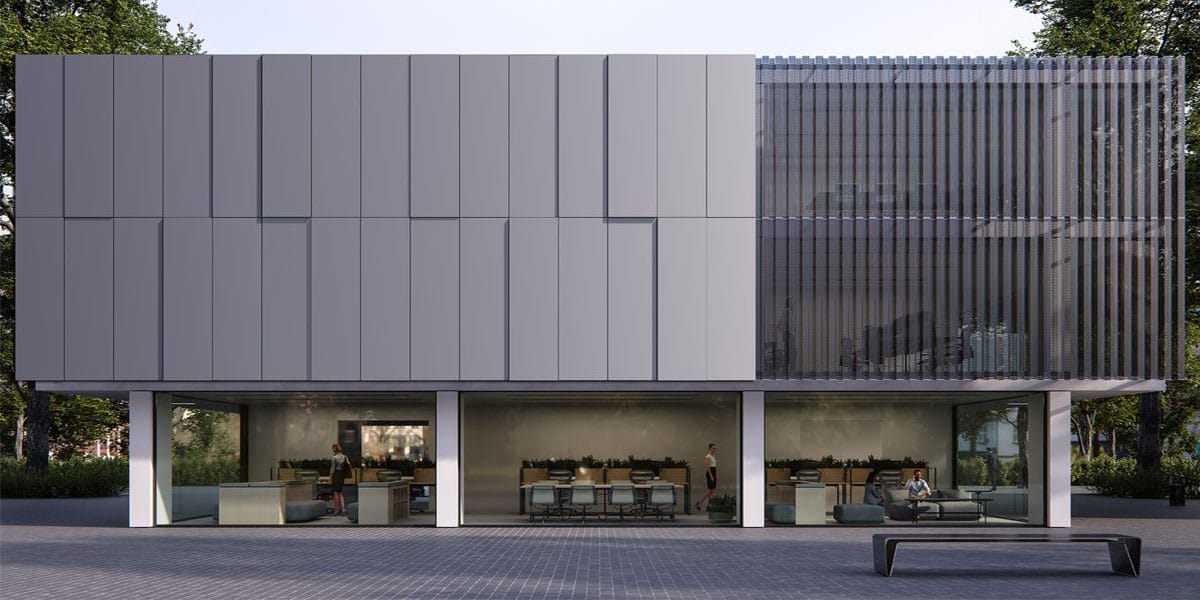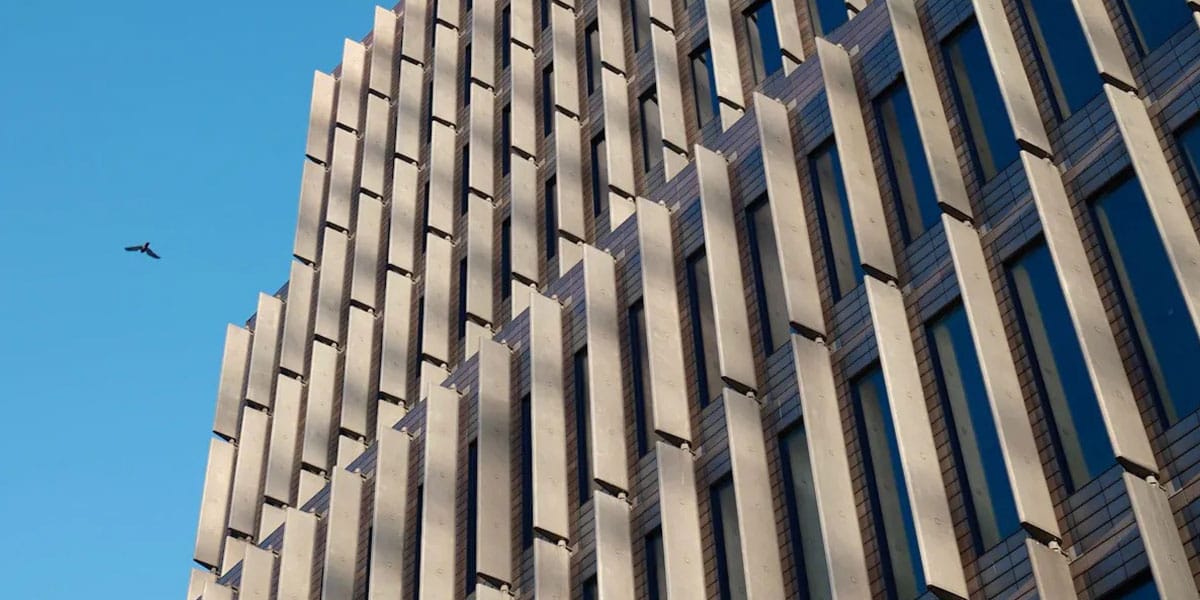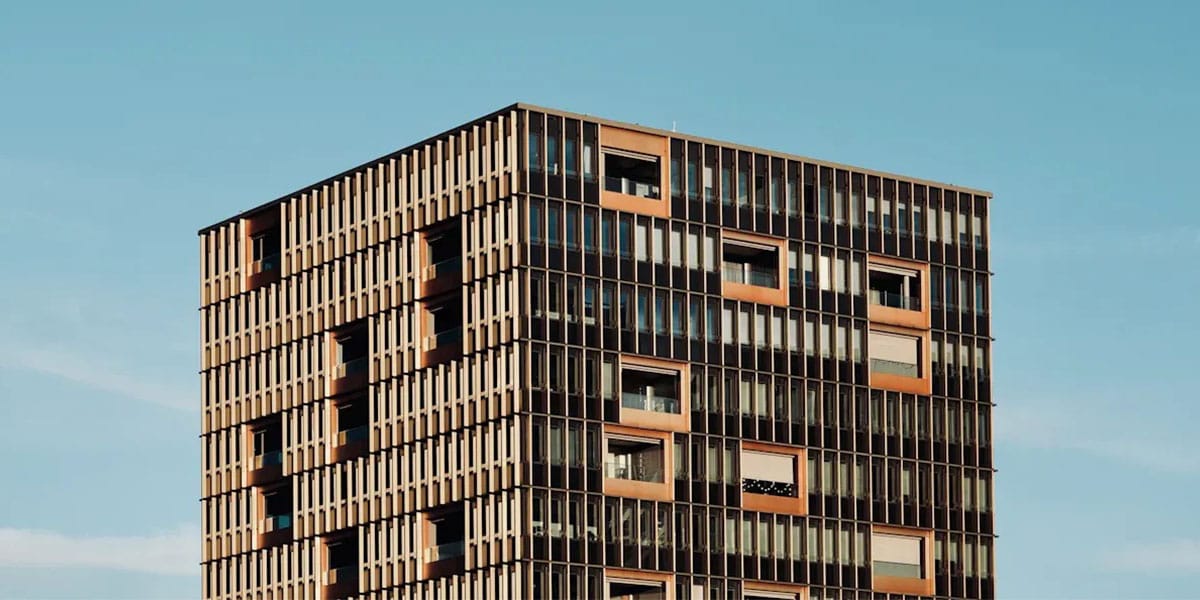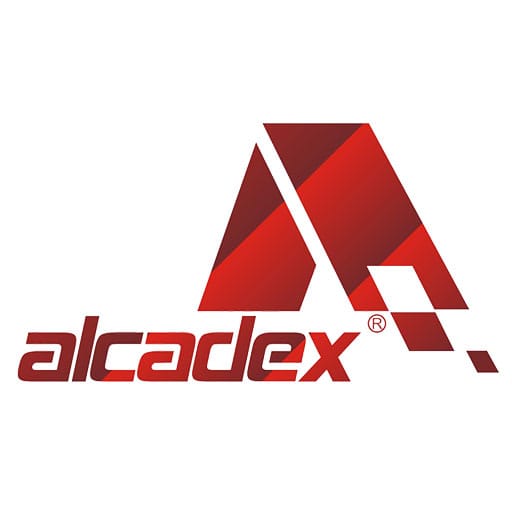
26 Jun Advantages and Disadvantages of Aluminum Wall Panels in Modern Construction
Table of Contents
Aluminium cladding has become a common choice in modern construction, bringing both pros and cons. Many builders value metal wall panels for their cost-efficiency, strength, and flexible design. The growing use of aluminium cladding shows in the numbers:
Year | Market Size (USD Billion) | CAGR (%) | Growth Drivers |
|---|---|---|---|
2023 | N/A | Urbanization, industrialization | |
2032 | 15.2 | 7.1 | Lightweight, durable materials |
Metal wall panels, including aluminium panels and aluminium cladding, offer pros like easy installation and weather resistance. However, cons such as denting, insulation gaps, and repair challenges remain. Metal wall panels now dominate aluminum wall panels applications in both homes and businesses. Many designers choose aluminium cladding for its modern look, but users must weigh the pros and cons before deciding.
Key Takeaways
- Aluminum wall panels offer strong durability, weather resistance, and low maintenance, making them ideal for many building types.
- These panels provide design flexibility with many colors and finishes, and their lightweight nature helps reduce installation time and costs.
- Common drawbacks include denting, noise from rain or hail, and the need for careful sealing to prevent water leaks and energy loss.
- Aluminum panels improve energy efficiency when insulated properly and are fire-resistant, meeting important safety standards.
- Recyclability and environmental benefits make aluminum wall panels a smart, sustainable choice for modern construction projects.
Pros and Cons
This section explores the pros and cons of aluminum wall panels in modern construction. Builders and architects often weigh the advantages of using metal wall panels against their drawbacks before making a decision. Real-world examples show how these panels perform in different environments, helping readers understand both sides.
Advantages of Using Metal Wall Panels
Aluminum wall panels offer many benefits for modern buildings. They stand out for their durability and low maintenance. Many commercial buildings use metal wall panels because they resist rot, decay, and insect damage. For example, schools and hospitals often choose these panels since they last for decades with little upkeep.
Tip: Aluminum wall panels only need a simple rinse once a year to stay clean.
The panels also provide strong weather resistance. They can handle high winds, heavy snow, and hailstorms. In coastal cities, aluminum panels do not rust or swell, making them ideal for humid climates. Fire resistance is another key advantage. Insurance companies often favor buildings with these panels because they do not ignite or melt.
Design flexibility is a major reason architects select metal wall panels. They come in many colors, textures, and finishes, including wood-like patterns. This variety allows designers to match the look of both modern and traditional buildings. The lightweight nature of aluminum panels makes installation easier and reduces labor costs.
The following table summarizes the main pros and cons of aluminum wall panels:
Pros of Aluminum Wall Panels | Cons of Aluminum Wall Panels |
|---|---|
Insect-proof: Resistant to insect damage unlike wood. | Prone to dents and scratches; requires professional repair. |
Fire-resistant: Non-flammable, does not ignite or melt; favored by insurance companies. | Noise issues: Expansion and contraction cause noise; rain and hail can be loud on panels. |
Extremely durable: Coated to prevent corrosion; can last over 50 years with proper maintenance. | Industrial appearance: Metal look may not suit traditional aesthetics. |
Cost-efficient: Generally cheaper than many durable cladding systems; lightweight reduces labor costs. | Joints require careful sealing to prevent water infiltration and energy loss. |
Low maintenance: Easy to clean, minimal upkeep needed. | Thermal conductivity: High heat transfer can affect insulation if not managed. |
Energy efficient: Heavier gauge panels improve insulation, reducing utility bills. |
|
Environmentally friendly: Recyclable and often made from recycled materials. |
|
Waterproof and rustproof: Suitable for humid regions, does not swell or shrink with weather. |
|
Variety of styles and colors: Available in multiple textures and finishes, including wood-like patterns. |
|
Many schools and office buildings use metal wall panels to save on long-term costs. The panels cost about $2 per square foot, with heavier gauges up to $7 per square foot. Their energy efficiency helps lower heating and cooling bills, especially in large buildings. The panels are also recyclable, making them a green choice for sustainable construction.
Disadvantages of Using Metal Wall Panels
Despite the many advantages of using metal wall panels, some drawbacks exist. One of the main cons is their tendency to dent or scratch. In busy areas like loading docks or near ground level, panels can get damaged by carts or equipment. Some buildings use protective bases to prevent dents in these high-traffic zones.
Noise can also be a problem. When rain or hail hits the panels, the sound can be loud inside the building. Expansion and contraction from temperature changes may cause popping noises. Some people find the industrial look of metal wall panels does not fit traditional homes or historic buildings.
Insulation presents another challenge. Aluminum conducts heat well, so without proper insulation, buildings may lose energy. Careful sealing of joints is important to prevent water leaks and energy loss. If installers do not seal the joints correctly, water can get inside the walls and cause problems.
Note: Metal composite material panels can suffer from oil canning, which causes a wavy appearance on the surface.
Corrosion can occur if builders use different metals together, leading to stains or damage over time. In high-rise buildings, window washing equipment can dent panels if they lack high impact resistance. Over time, weather exposure may also affect the appearance of the panels.
Durability and Maintenance
 Image Source: unsplash
Image Source: unsplash
Lifespan and Weather Resistance
Metal wall panels offer impressive durability in modern construction. Many builders choose aluminium panels for their lightweight and high strength. These panels often last for decades, with insulated metal wall panels reaching lifespans of 30 to 60 years or more. The natural oxide coating on aluminium panels gives them excellent corrosion resistance, which protects buildings from rain, snow, and humidity. Manufacturers often add extra coatings to boost this protection, making the panels even more reliable in harsh climates.
Material Type | Lifespan Range (Years) | Weather Resistance Features |
|---|---|---|
Insulated Metal Panels (IMPs) | 30 to 60+ | Designed to withstand extreme temperatures, high winds, heavy precipitation, UV radiation; low maintenance. |
N/A | Naturally waterproof due to oxide coating; corrosion resistant; effective in rainy and storm-prone climates. |
Aluminium panels provide a waterproof barrier that keeps water out of both interior and exterior spaces. This weather resistance makes them popular in places like the Pacific Northwest and the Gulf Coast, where storms and heavy rain are common. Metal wall panels require low maintenance to keep their strength and appearance over time. Most owners only need to rinse the panels once a year to maintain their look and performance.
Denting and Surface Damage
While metal wall panels deliver high strength and corrosion resistance, they can suffer from denting and surface damage. Hailstorms, flying stones, or accidental bumps from carts can leave permanent marks on aluminium panels. Laboratory tests show that hail can cause deep dents, especially if the panels have a thinner gauge or lower dynamic yield strength. The lightweight and high strength of aluminium panels help reduce some damage, but not all impacts can be avoided.
Note: Dents in metal wall panels often require professional repair to restore the original appearance.
Corrosion resistance remains strong even after minor dents, but deep damage may affect the panel’s protective coatings. The frequency of denting depends on the location and use of the building. High-traffic areas or places exposed to severe weather may see more surface damage. Choosing thicker panels or those with reinforced cores can help improve dent resistance and maintain durability. Regular inspection and prompt repair keep metal wall panels looking their best and ensure long-term low maintenance.
Cost and Installation
Cost Efficiency
Aluminum wall panels offer strong cost-efficiency in modern construction. Builders often choose these panels because they help reduce both material and labor expenses. A study comparing steel aluminum foam sandwich panels to traditional stiffened plates found that sandwich panels can lower structural weight by up to 30%. This weight reduction means less support is needed, which saves money on the overall project. Even if the initial price of aluminum wall panels is higher, the savings from lighter structures often balance out the cost.
Research from high-rise construction in India showed that using proprietary aluminum formwork was 3% more economical than traditional methods. The same research found that construction time dropped by 45%. Faster building times mean lower labor costs and quicker project completion. Market analysis also shows that demand for aluminum composite panels keeps rising. Their durability and lightweight design make them a popular choice, which supports their reputation for cost-efficiency.
Tip: Choosing aluminum wall panels can help builders finish projects faster and save on long-term maintenance.
Installation and Labor
Installing aluminum wall panels is usually straightforward. The panels are lightweight, so workers can move and position them with less effort. This feature reduces the need for heavy equipment and lowers the risk of injury. Many panels come pre-fabricated, which speeds up the installation process. Builders can cover large wall areas quickly, which helps keep projects on schedule.
A simple installation process also means fewer mistakes. Workers can fit panels together with basic tools, and the panels often snap or lock into place. This method reduces the need for skilled labor, which can lower costs even more. However, proper sealing and alignment remain important. If workers do not seal the joints correctly, water or air can leak into the building.
Installation Factor | Impact on Project |
|---|---|
Lightweight panels | Easier handling |
Pre-fabricated sections | Faster assembly |
Simple tools required | Lower labor costs |
Careful sealing needed | Prevents leaks |
Note: Regular training for installers helps ensure panels are fitted and sealed correctly, which protects the building over time.
Aluminum Wall Panels Applications

Commercial and Residential Uses
Aluminum wall panels applications have expanded rapidly in both commercial and residential settings. Many architects select aluminium cladding for office towers, shopping centers, and schools. These panels provide strong protection against weather and require little maintenance. In commercial buildings, aluminum cladding helps reduce structural weight, which shortens construction time and lowers costs. Hospitals and airports often use aluminium facade cladding because it resists corrosion and keeps its appearance for years.
Residential projects also benefit from aluminum wall panels applications. Homeowners choose aluminium cladding for its modern look and easy cleaning. Apartment complexes and condominiums use exterior wall cladding to protect against rain and sun. Builders find that aluminium facade cladding offers a wide range of colors and textures, making it easy to match any style. The lightweight nature of aluminum cladding allows for quick installation, which saves time and money.
Tip: Aluminum wall panels applications in residential and commercial buildings can help improve energy efficiency and reduce long-term repair needs.
Aluminum Cladding
Aluminum cladding stands out for its durability and design flexibility. Many modern exterior design projects rely on aluminium cladding to create sleek, attractive facades. Market data shows that the global aluminum cladding market reached $56.5 billion in 2024 and will likely double by 2034. This growth comes from increased demand in both commercial and residential sectors.
Aluminium cladding resists moisture, UV rays, and temperature changes. It does not need frequent repainting or resealing, which lowers maintenance costs. Builders use aluminium facade cladding for exterior wall cladding on high-rise towers and single-family homes. The panels come in many finishes, including wood grain and metallic colors. This variety supports creative designs for both commercial applications and homes.
A scientific study found that aluminum cladding works well in large office buildings but may need to combine with other materials for the best daylight and energy results. An optimized system with mostly aluminum and a small amount of polycarbonate met strict green building standards. This shows that aluminium cladding can play a key role in sustainable architecture.
Application Area | Benefits of Aluminium Cladding |
|---|---|
Commercial Buildings | Low maintenance, strong weather resistance |
Residential Homes | Modern look, easy installation |
Exterior Wall Cladding | Corrosion resistance, design flexibility |
Performance Factors
Fire Resistance and Safety
Aluminum wall panels provide strong fire resistance, making them a reliable choice for modern buildings. Many panels, especially insulated metal panels, meet strict fire performance standards such as NFPA 285 and International Building Code requirements. Manufacturers test these panels using methods like ASTM E119 and UL 263 to ensure they act as a fire resistant material. These tests check how well the panels stop flames and heat from spreading.
Large-scale fire tests, such as those following the BS 8414-2 standard, show that insulated metal panels perform well in both internal and external fire scenarios. These panels often receive certifications like the UL Mark, which building officials and buyers trust for safety. The panels’ design, including metal thickness and foam core, helps them resist fire and protect building occupants.
Tip: Always check for UL or CE certification when selecting aluminum wall panels for fire safety.
Insulation and Thermal Expansion
Insulated metal panels combine metal skins with foam cores to improve energy efficiency and thermal insulation. Scientists use heat flow meters to measure how well these panels block heat transfer. Tests show that the insulation performance depends on the type of foam and the surface finish. Panels with aluminum foil layers show thermal conductivity values between polyisocyanurate and expanded polystyrene foam. The insulation keeps buildings warm in winter and cool in summer.
Thermal expansion is another factor to consider. Aluminum expands and contracts with temperature changes. Designers must account for this movement to prevent panel warping or joint failure. While tests confirm strong insulation, they do not always measure thermal expansion directly. Proper installation and flexible joint systems help manage these changes and keep the panels secure.
Waterproofing and Sealing
Waterproofing protects buildings from leaks and moisture damage. Aluminum wall panels use surface layers and special membranes to create a strong seal. These materials work well in temperatures from -30°C to 80°C, making them suitable for many climates. Adding polyester fiberglass cloth increases resistance to stretching and improves waterproofing.
Studies on panel joints show that sealing is key for both waterproofing and insulation. Well-sealed joints stop air and water from entering the building, even in extreme cold. Builders use UV-stable caulking and elastomeric coatings to seal seams and fasteners. Vapor retarders prevent condensation inside the walls. These methods keep buildings dry and maintain the performance of aluminum wall panels over time.
Environmental Impact
Recyclability
Aluminum cladding and aluminium cladding both play a major role in promoting sustainability in modern construction. Builders choose aluminum cladding because it can be recycled many times without losing quality. Aluminium cladding supports a circular economy, where materials are reused instead of thrown away. In the United States, the construction industry creates about 600 million tons of debris each year. Aluminum cladding helps reduce this waste because it is easy to recycle.
Recycling aluminum cladding uses only about 5% of the energy needed to make new aluminum from raw materials. This process lowers greenhouse gas emissions and saves energy. Most aluminum cladding and aluminium cladding products already contain recycled content. Many buildings use sorting systems to separate metals, which increases recycling rates. For example, a renovation project reached a 95% recycling rate for metals by using special bins and sorting methods. These practices show how aluminum cladding and aluminium cladding support environmental sustainability and reduce the impact of construction waste.
♻️ Aluminum cladding and aluminium cladding can be recycled over and over, making them a smart choice for green building projects.
Environmental Considerations
Aluminum cladding and aluminium cladding offer strong benefits for environmental sustainability. Life cycle assessments show that while making aluminum cladding takes energy, the panels last a long time and need little maintenance. Their light weight means less fuel is needed to transport them, which lowers pollution. During use, aluminum cladding and aluminium cladding resist weather and do not need to be replaced often.
Studies compare aluminum cladding and aluminium cladding to other materials like PVC and wood. Results show that aluminum cladding and aluminium cladding have a much lower impact on global warming over their lifetime. Recycling credits further reduce their environmental footprint. Advanced recycling methods, such as direct and semi-direct recycling, help lower energy use and pollution even more. These methods make aluminum cladding and aluminium cladding important for environmental sustainability in construction.
Material | Global Warming Impact | Recyclability | Maintenance Needs |
|---|---|---|---|
Aluminum Cladding | Low | High | Low |
PVC | High | Low | Medium |
Wood | Medium | Medium | High |
Note: Using aluminum cladding and aluminium cladding helps builders meet green building standards and supports a healthier planet.
Aluminum wall panels bring strong durability, design flexibility, and easy maintenance. However, they can dent and may need extra insulation. Every project has unique needs. Builders should:
Assess climate and building use
Consider long-term costs and repairs
Consult professionals for best results
Careful planning helps ensure aluminum wall panels meet both style and performance goals.
FAQ
What is the main benefit of aluminum wall panels?
Aluminum wall panels offer strong durability and low maintenance. Builders choose them for their resistance to rust, insects, and weather. These panels also provide many design options for modern and traditional buildings.
Can aluminum wall panels help save energy?
Yes. Insulated aluminum wall panels improve a building’s energy efficiency. They help keep heat inside during winter and outside during summer. This can lower heating and cooling costs.
How do you clean aluminum wall panels?
Most owners rinse aluminum wall panels with water once a year. Mild soap removes dirt or stains. Avoid harsh chemicals or abrasive tools to protect the surface.
Are aluminum wall panels safe in a fire?
Aluminum wall panels resist fire. They do not ignite or melt easily. Many panels meet strict fire safety standards, making them a safe choice for schools, offices, and homes.
What should you do if a panel gets dented?
A professional should repair dents in aluminum wall panels. Small dents may not affect performance, but deep dents can harm the panel’s look and protection. Regular inspection helps catch damage early.


